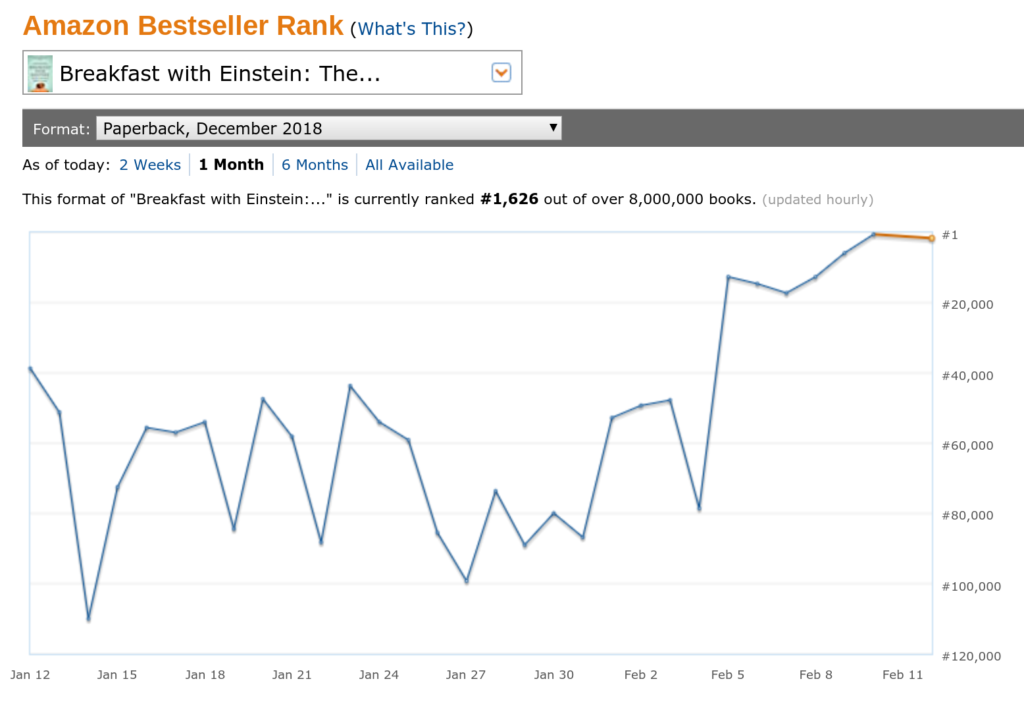In the end, I think this is a book about marketing.
Of course, there’s a lot that could mean. As a book of argumentative nonfiction, it is of course trying to sell a number of things, not least the idea that Bruno Latour is smarter than you are. It is also a work that is itself extensively marketed, though things like the New York Times piece that prompted an earlier blog post as offering a transformative vision of new philosophical view of the world.
But in the end, I think it’s about marketing, in the sense of offering strategies for shaping words to sell people on a particular thing or course of action.
That probably seems awfully reductive for such a sweepingly grandiose book, full of footnotes and semi-obscure scholarly references. It takes as its subject the entire world, and posits the need for a comprehensive re-orientation of philosophy and politics and science to confront the “New Climatic Regime,” one of a host of phrases rendered proper nouns so as to freight them with greater importance and imply meanings that are subtly different from their common usage. It’s full of talk of the Local and the Global and the Terrestrial and the view of Moderns, not to mention hyphenated phrases (nature-universe, nature-as-process) and quasi-scientific diagrams and italicized words beyond numbering.
(As I noted on Twitter while reading it, this is loaded with writing tics that I recognize as crazy-person signifiers from Usenet in the 1990’s. I find sentences with lots of emphasized words to be wildly distracting because they remind me of Archimedes Plutonium and others of that ilk.)
So, why do I say that such a grand edifice can be dismissed as something as mundane as marketing? Because of its discussion of science.
Now, to be sure, I have some skin in the metaphorical game when the topic turns to science, and Latour does a number of things to get under that skin. He airily dismisses as immaterial any science that isn’t immediately concerned with the “Critical Zone,” the habitable portions of the Earth, which does little to endear him to an atomic physicist. He writes at length about how science attempts to take an impossible objective stance: “Everything has to be viewed as if from Sirius– a Sirius of the imagination, to which no one has ever had access.” (p.68) A good many of these references to the “view from Sirius” read as contemptuous, but maybe that’s just because he’s French.
At the crucial point of the argument as it pertains to science, though, I think there are clues that the whole enterprise only makes sense as a piece of and a guide to marketing. That is, his discussion of the scientific enterprise is flawed in ways that suggest he’s not really talking about science as it exists, but about public discourse about science.
Take, for example, the bit that immediately follows the Sirius sentence quoted above, also on pg 68:
Furthermore, this promotion of the Earth as a planet that has become part of the infinite universe, a body among bodies, has the disadvantage of limiting to just a few movements– at the beginning of the scientific revolution, to just one: the falling of bodies– the whole gamut of movements grasped by the positive sciences.
Yet on the Earth seen from the inside, there are many other forms of movements that have become harder and harder to take into account. Little by little, it has become more cumbersome to gain objective knowledge about a whole range of transformations: genesis, birth, growth, life, death, decay, metamorphoses.
As someone seeing science from the inside (albeit not as one who studies the “Critical Zone,” so maybe I don’t count as in insider…), this seems spectacularly wrong, or at least wildly out of date. It’s arguably true that, say, forty or fifty years ago we were restricted to laboriously studying only the simplest sorts of processes, but I don’t think that’s true now. On the contrary, I think that the advance of technology in any number of fields has vastly increased the rate of knowledge acquisition in science, and the complexity of the processes that can be studied. A huge portion of current work in the life sciences is concerned not with mechanistic description of incredibly simple idealized systems, but with the rich and complex interactions between the enormous number of factors that come into play in real systems.
I think he also stumbles a few pages later, in making a contrast between a “Galileian” picture of simple objects obeying simple rules and a “Lovelockian” picture that attributes agency to collective entities making up the biosphere. On page 77, he writes:
With Galileian objects as the model, we can indeed take nature as a “resource to exploit,” but with Lovelockian agents, it is useless to nurture illusions. Lovelock’s objects have agency, they are going to react– first chemically, biochemically, geologically– and it would be naive to believe that they are going to remain inert no matter how much pressure is put on them.
[…] The conflict can be summarized simply: there are those who continue to look at things from the vantage point of Sirius and simply do not see that the earth system reacts to human action, or do not believe it possible; they still hope that the Earth will mysteriously be beamed to Sirius and become one planet among others. Basically, they do not believe that there is life on Earth capable of suffering and reacting. And there are those who seek, while keeping a firm grip on the sciences, to understand what is meant by distributing action, animation, the power to act, all along the causal chains in which they find themselves entangled.
Again, if this is to be taken as referring to science and scientists, it seems to me to be incredibly wrong. It basically waves off something like fifty years worth of environmental and ecological science, which since the late 1960’s has been heavily invested in investigating just exactly how “the earth system reacts to human action.” I doubt you could find a working scientist studying the “Critical Zone” (which is, after all, the only area that matters…) who espouses anything close to the naive view he’s suggesting is common.
So what is the real point? I think the key bit comes between the pages quoted above, on page 73:
No progress will be made toward a “politics of nature” as long as the same term is used to designate, for example, research into terrestrial magnetism, the classification of the 3,500 exoplanets that have been spotted to date, the detection of gravitational waves, the role of earthworms in soil aeration, the reaction of shepherds in the Pyrenees to the reintroduction of bears, or the reaction of bacteria in our intestines to our latest gastronomic overindulgence. That nature is a real catch-all.
There is no point in looking any further for the slow pace of mobilizations in favor of nature-as-universe. It is completely incapable of churning anything political. To make that type of beings– the Galileian objects– the model for what is going to mobilize us in geo-social conflicts is to court failure. Trying to mobilize that nature in class conflicts is like getting ready to go out on a protest march by stepping into concrete.
This, I think, makes clear that the issue is nothing to do with the process or practice of science, but with its rhetoric. That is, the problem isn’t really that scientists with our view-from-Sirius are doing science wrong, it’s that we’re talking about it in ineffective ways.
The real problem, in this analysis, isn’t internal to science, it’s in science’s interaction with the world of politics and policy. The Lovelockian view of natural systems as agents that respond to human activity isn’t a transformation in the way scientists pose and answer questions, it’s a transformation in the rhetoric that should be used to talk about them. People in general, and in particular the people who drive decision-making, aren’t inspired by sterile talk of simple systems and rules, but might be moved to action by talk of species and ecosystems as conscious agents capable of suffering and responding.
In other words, it’s about marketing.
Reading the book in that light makes a lot of the talk about science make more sense– it’s not really about science, it’s about how science is talked about. It’s also something of a relief, because otherwise it’s extremely difficult to see what concrete practices of science would be changed by thinking about policy as a negotiation between some wide range of “agents” that includes both various groups of humans and also ecosystems. The “Lovelockian” approach is tricky to parse at best, and mystical mumbo-jumbo at worst, but it’s not necessary to apply it to doing science.
In practical terms, the science of the “Critical Zone” can continue more or less as it has been for the last several decades– studying the complex interactions of species and systems making up the environment. The responses of the individual components can be studied with the same tools and physical laws as are already being used with great effectiveness. When it comes to stirring action, though, the language of agency is simply more effective. Re-casting policymaking in terms of a negotiation between agents doesn’t require different input in terms of practical science– it’s still a matter of measuring “If we change these things in this manner, this is what happens”– but the way to talk about those inputs changes.
If that sounds disappointingly less than radically transformative, well, yeah. That was pretty much my reaction when this interpretation clicked– it seemed like a lot less than what was suggested by the cover copy and the claims internal to the text. But then, that’s marketing for you.



